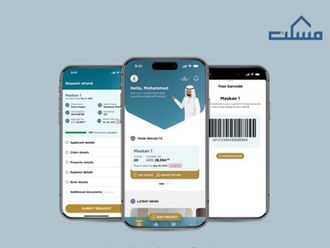
One of America’s founding fathers, Benjamin Franklin, once said, “If you fail to plan, you are planning to fail”.
Franklin understood the exercise of planning is as important as execution, for it is within the planning stages that we discover the flaws in our ideas.
This is why governments at all levels develop long-term plans for the efficient deployment of resources. Good governance and resource management as measured by access to modern roads, high-speed internet, clean water and reliable public utilities are going to be key indicators for how well a government meets the expectations of their population.
The challenge: Public resources are finite, and need to be allocated efficiently to ensure the rapidly urbanising populations have access to quality infrastructure, healthcare and education. The good news is that governments across the region are establishing the legislative framework to work with the private sector to provide better citizen services.
Saudi Arabia’s Vision 2030 Initiative, if implemented as intended, has the potential to be the region’s most transformative plan. Specifically, the privatisation programme that formalises the framework and objectives of its “public-private partnership” (PPP) initiative offers the most wide reaching potential for the country.
PPP programmes have been used by governments at both the municipal and national level to develop transportation infrastructure, provide community services and even to rehabilitate contaminated land for development. When effectively planned and scoped, they have unlocked the potential of underutilised public assets whilst leveraging the experience, financial resources and innovation of the private sector.
The result of which has been direct and indirect economic and social benefits. Of course, the key to creating mutually beneficial partnerships is aligning the long-term objectives of all stakeholders.
In an optimally structured transaction, the sanctioning public entity transfers the development risk to the private sector. In return, the private sector developer earns a risk premium for securing the financing, managing the development programme and operating the project. While public entities may have access to less expensive capital, the cost savings are offset by a lack of human capital to manage projects, competing policy initiatives requiring senior management oversight, a lack of expertise in a particular area, or more often than not, some combination of all of these constraints.
PPP structures are rightly seen as risk mitigation strategies by government bodies and as access points to larger projects by private sector actors. However, in a market where PPPs are nascent, it is important for all stakeholders to establish a record of achievement.
While risk is an inherent component of PPP, a good-faith effort should be made to mitigate as many structural risks as possible. This entails creating proper legal mechanisms for dispute resolution, tendering and oversight of ongoing projects. Government transparency and oversight is critical to attract large-scale private investment.
The benefits of PPPs are both economic and social. The economic benefits can be both directly and indirectly attributable to a specific project. Direct economic benefits are measured by the number of citizens employed as a direct result.
Indirectly attributable economic benefits accrue when a programme creates ancillary benefits and efficiencies. Consider the following:
A public transportation centred development is awarded to a regional developer who decides to build a residential tower, with supporting retail and community bank. In building the tower, the developer will engage his in-house team, external consultants and various construction trades.
To finance the project, the developer will use their network of investors and bankers who will in turn be compensated for procuring the required capital.
In this example, the public entity put the risk of project management and funding to the private developer who engaged a series of professionals to mitigate their risk. At every stage of this project, value was created and the effect of the development multiplied.
Allowing a private developer to apply their expertise allows the government to perform its rightful oversight role. Moreover, when the profit motive is transferred to the private sector developer, the public entity can focus on meeting other social metrics.
The Knight Frank Middle East Development & Consultancy division has been actively engaged with many public entities in the region, as they embark on some of the world’s most ambitious P3 programmes. The Red Sea Development Company, NEOM, Al Quddiya is one project of note offering an entrepreneurial energy and vision behind what they anticipate to be more public private engagement in support of the Kingdom’s long-term development plans.
We expect PPPs to be instrumental in provisioning large-scale infrastructure programmes throughout the region. There are lessons to be learnt from successful PPP models internationally. There will be growing pains from missteps, but there is a plan in place and that is the first step to long-term success.
— Neill Nagib is Associate Partner, Development Consultancy and Research, at Knight Frank.












